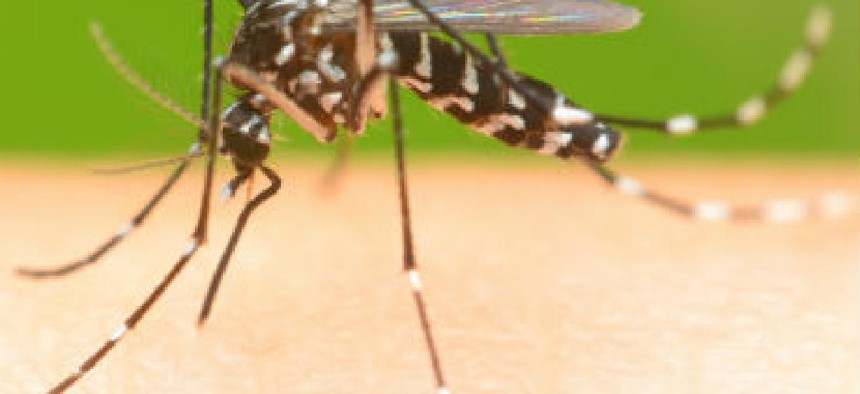USAID crowdsources 21 ideas for fighting Zika

The U.S. Agency for International Development’s crowdsourcing efforts to fight the Zika virus have produced some cutting-edge solutions from global innovators.

The U.S. Agency for International Development's crowdsourcing efforts to fight the Zika virus have produced some cutting-edge solutions from global innovators.
When USAID announced its Combating Zika and Future Threats Grand Challenge for Development in April, it said it would invest up to $30 million in innovative approaches and solutions for preventing, detecting and responding to the outbreak and future infectious diseases.
In nine weeks, innovators, research institutions and corporations responded with 900 submissions. After a "rigorous review process," USAID narrowed the pool to 21 solutions that will receive funding for accelerated development, testing and deployment. The solutions address vector control, personal and household protection, vector and disease surveillance, diagnostics and community engagement.
Some award winners are tackling vector control. A Michigan State University team, for example, is deploying mosquitoes infected with Wolbachia, a bacteria that blocks transmission of Zika from mosquitoes to humans, to create a viral resistant population, according to the project summaries. Others focus on personal and household protection, with solutions that range from electronic mosquito force fields to sandals that release a wide-area mosquito repellent.
Several of the nominees have developed IT-based solutions, such as VectorWEB. Created at Johns Hopkins University, it's a cloud-connected system of smart ovitraps, which will provide real-time surveillance data to health administrators and communities to drive outbreak modeling, targeted resource allocation and community-driven interventions.
Stanford University's MosquitoFreq, meanwhile, is a flip-phone application that records mosquitos' sounds and uses crowdsourcing to identify specific mosquito species. The frequencies are used to build biomarkers for species, and when paired with phone-based metadata, could identify specific mosquitoes in near-real time for future monitoring of infectious diseases.
To support community engagement, the Johns Hopkins Center for Communication Programs is developing the Rapid SBCC Habit Optimization Tool, or R-SHOT, to encourage residents' behavior when it comes to cleaning of large standing-water mosquito habitats. The field tool recommends the best practices and motivational tactics for a specific community by combining local data with evidence-based principles.
To advance disease surveillance, Premise Data in San Francisco is working on a citizen-led Disease Risk Mapping and Vector Monitoring solution. The mobile-based data analytics platform gathers geo-tagged data on environmental risk factors collected by data contributors in selected cities. The data is transformed daily into heat maps that facilitate real-time reporting and make risk-identification data more accessible. It could be used to quickly detect and respond to threats and to target resources based on predictive modeling.
Another nominee is improving surveillance with the Internet of Things. SystemOne, a provider of data-driven healthcare solutions, is developing the Aspect web-based connectivity platform. It allows diagnostic devices to report results and integrate with health systems in real time, displays disease and device data on a dashboard and sends key messages to stakeholders. Data visibility could improve time-to-patient treatment and shed light on device operation and supply consumption.
USAID plans to award funding to more challenge participants in the coming months. For a full list of the first round of funded projects, click here.
This article was originally published in GCN.





